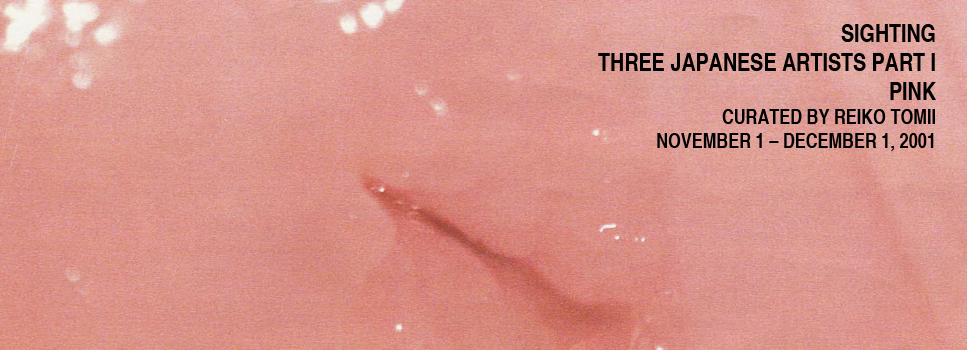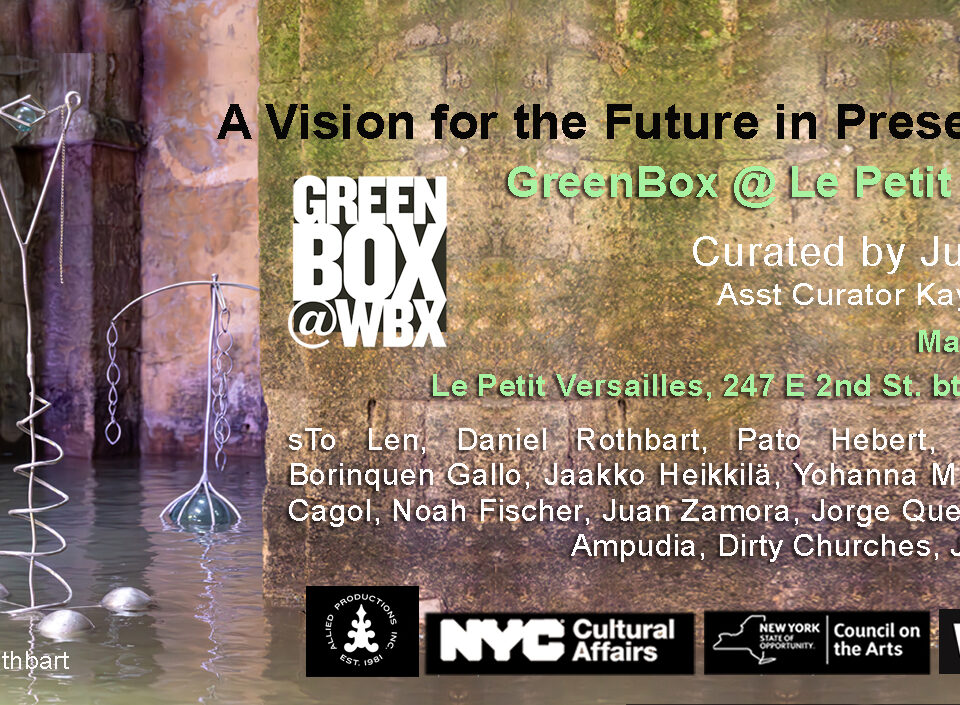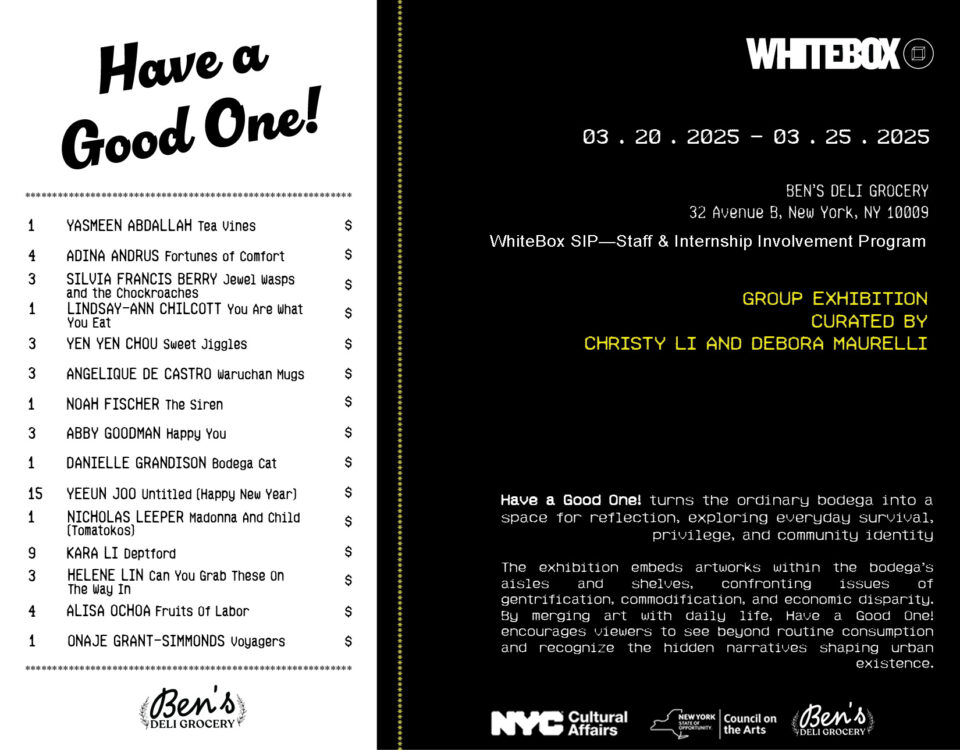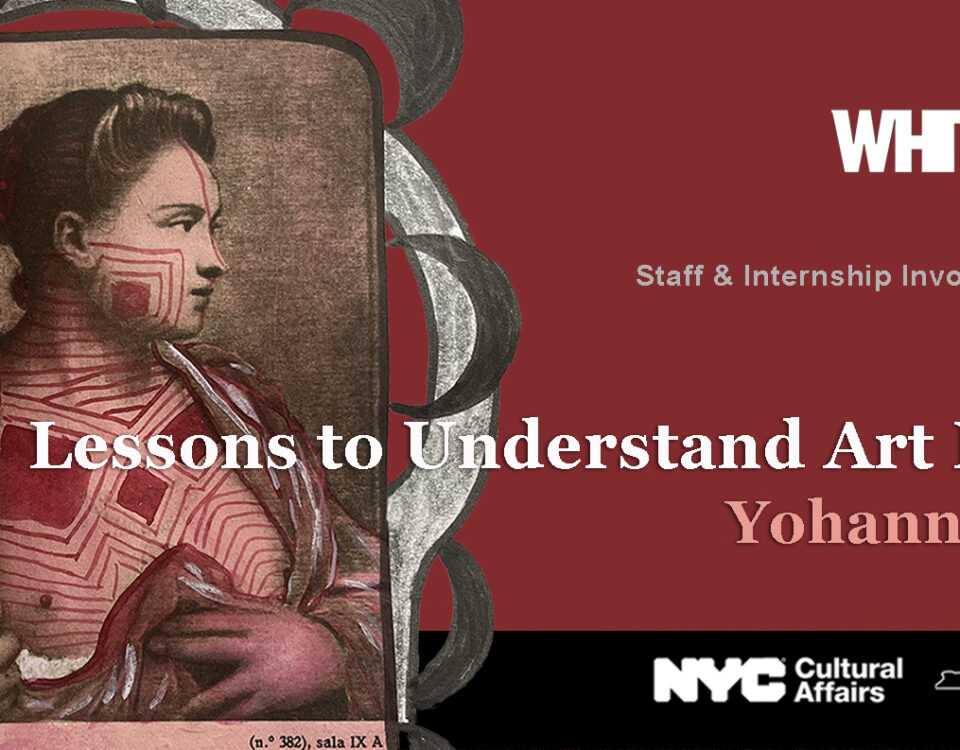PRODIGAL PRODIGY
September 6, 2001SIGHTING THREE JAPANESE ARTISTS PART II: HISTORY LESSONS
December 7, 2001SIGHTING THREE JAPANESE ARTISTS PART I PINK CURATED BY REIKO TOMII NOVEMBER 1 – DECEMBER 1, 2001
The exhibition series “Sighting: Three Japanese Artists” at White Box consists of two parts: Part 1: “Pink”, a solo presentation of Emiko Kasahara, followed by Part 2: “History Lessons”, featuring Naoyoshi Hikosaka and Yukinori Yanagi.
The series introduces recent works by these artists, who combine conceptualist strategies with distinct aesthetic styles, who share an intent gaze on sites, or issues that draw little attention in our everyday life.
The first part, “Pink”, is the full-scale New York premiere of two of Emiko Kasahara’s major works: Pink (1997), photographs of cervix, and Setting (1998), videotaping of women’s make-up processes.
At a glance, Kasahara’s concern appears ostensibly feminist. Still, she seeks for a more ambiguous yet ambitious terrain—she does not intend to condemn the institutions as such that bind women but to deconstruct them, by individualizing each site, be it the woman’s body or cosmetics. Thus, for her, collaboration with other women (many of them, indeed) becomes a critical mode of operation. Yet, paradoxically, multiplicity she creates announces anonymity and similarity, adding layers of meaning to her works.
Pink resulted from a collaboration of Kasahara with twenty-four women and a male gynecologist in Tokyo, Japan. She asked the women to receive a few gynecological examinations each from the cooperating doctor, who photographed their cervixes in black-and-white. (It is not as customary in Japan for women to have annual visits with gynecologists as in the US) Consisting of nine enlarged images, tinted pink, Pink constitutes an internal site, invisible to ordinary sight, where a convergence takes place between sex and life, sexuality and reproduction. In other words, Pink embodies the space of “in between.”
Cosmetics and beauty products have proven to be a fertile ground for Kasahara who endeavors to see something that eludes our conscious scrutiny in the everyday context. Among them, Setting is a videotaped compilation of eighty-eight women’s make-up routines, in which the artist complicates the relationship of private-public. While the cosmetic ritual helps the women to create their public faces, the act is inherently private—no one but themselves and their mirrors ordinarily witness it. The process that channels the private and the public is ultimately made very public, when presented on monitors installed in such places as bathrooms, store windows, and gallery spaces.
This exhibition is partially supported by:
The Peter Norton Family Foundation
The Japan Foundation
Alexandra Munroe
In-kind contribution by Digital Colors, Inc. + Suraj Hansraj




